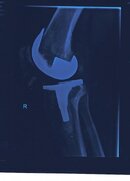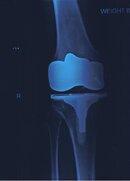OP
Nathalie_nl
Registered
Dear all,
Thank you again for your kind and supportive responses. Here are some of my thoughts on your posts. I'd still like to hear more about how you guys think about the education of new divers. Is the absense of attention for the use of smbs a fault in the curriculum or is it not? (Also see my post #17 last bit).
#18 tracydr: thank you for your offer. I appreciate this a lot. I'm very lucky to have found a first class orthopedic surgeon, close to my home (the Netherlands, Europe). I'm also very lucky that the insurance company is paying all my medical expenses and that my wages are covered as well. I cannot imagine what it would be like if I would be left with a debt of more than 150,000 USD, because of hospital bills.
Allthough I'm starting to get the hang of it, I still don't like riding around in my wheelchair. I'm not familair with your illness, but I wish you all the best.
Regarding the pickup by pangas in stead of larger dive boats: I don't believe this a lot safer. Yes, they are closer to the water, but still the reflection of the water won't allow you to see what's under the surface, unless you look at an almost straight angle. Smaller engines still have the potential to kill. Remember that the rotate with a speed of 180 times per second. Even a small engine will cut through you like a hot knife will cut through butter.
#19 Brodydog: Thank you. For this moment I feel that for me the question of who is the main person to blame is completely irrelevant. I'm also not trying to figure out if I'm entitled to some kind of punitive payment. For me that is easy to say, because all my costs are paid for. Maybe the blame question will become relevant in a couple of months, in case I still suffer from pain by then. I hope not, because blame discussions cost a lot of energy. At the moment I'd love to warn other divers, because my accident was so easily avoidable. Especially the post where I read that people are going to buy an smb, or use it more often, give me energy.
#21 Peter69_56: "Just get used to setting off the alarms in the airports and being frisked every flight. A small price to pay for the freedom of movement." Cannot wait! Bright future awaits me! Small question: are you able to run and fully bend your knee with a knee replacement? I have no idea...
Small question: are you able to run and fully bend your knee with a knee replacement? I have no idea...
#30 InTheDrink: I partly agree on your theory of pointing your finns down for a faster decent. But just do the math with the information I give you now: an engine rotates 180 times per second. Counting my scars I come to seven. The whole acident took place in a small fraction of a split second. That is not enough time to even start pointing your finns down, at least, that is what I noticed...
Take care,
Nathalie.
Thank you again for your kind and supportive responses. Here are some of my thoughts on your posts. I'd still like to hear more about how you guys think about the education of new divers. Is the absense of attention for the use of smbs a fault in the curriculum or is it not? (Also see my post #17 last bit).
#18 tracydr: thank you for your offer. I appreciate this a lot. I'm very lucky to have found a first class orthopedic surgeon, close to my home (the Netherlands, Europe). I'm also very lucky that the insurance company is paying all my medical expenses and that my wages are covered as well. I cannot imagine what it would be like if I would be left with a debt of more than 150,000 USD, because of hospital bills.
Allthough I'm starting to get the hang of it, I still don't like riding around in my wheelchair. I'm not familair with your illness, but I wish you all the best.
Regarding the pickup by pangas in stead of larger dive boats: I don't believe this a lot safer. Yes, they are closer to the water, but still the reflection of the water won't allow you to see what's under the surface, unless you look at an almost straight angle. Smaller engines still have the potential to kill. Remember that the rotate with a speed of 180 times per second. Even a small engine will cut through you like a hot knife will cut through butter.
#19 Brodydog: Thank you. For this moment I feel that for me the question of who is the main person to blame is completely irrelevant. I'm also not trying to figure out if I'm entitled to some kind of punitive payment. For me that is easy to say, because all my costs are paid for. Maybe the blame question will become relevant in a couple of months, in case I still suffer from pain by then. I hope not, because blame discussions cost a lot of energy. At the moment I'd love to warn other divers, because my accident was so easily avoidable. Especially the post where I read that people are going to buy an smb, or use it more often, give me energy.
#21 Peter69_56: "Just get used to setting off the alarms in the airports and being frisked every flight. A small price to pay for the freedom of movement." Cannot wait! Bright future awaits me!
#30 InTheDrink: I partly agree on your theory of pointing your finns down for a faster decent. But just do the math with the information I give you now: an engine rotates 180 times per second. Counting my scars I come to seven. The whole acident took place in a small fraction of a split second. That is not enough time to even start pointing your finns down, at least, that is what I noticed...
Take care,
Nathalie.



 .
.

